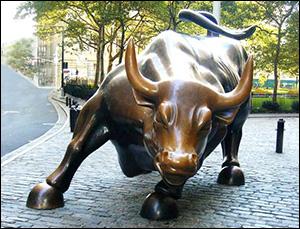Courtesy of Pam Martens
Short memories are going to once again doom millions of stock market investors who are getting their advice from Wall Street’s minions of deeply conflicted analysts and brokers. This is a good time to reflect on the fact that when the dot.com bubble went bust from 2000 to 2002 it wiped 78 percent of the value off the Nasdaq stock index. In the midst of the crash, this is how Ron Chernow correctly described what was happening for New York Times’ readers on March 15, 2001:
“Let us be clear about the magnitude of the Nasdaq collapse. The tumble has been so steep and so bloody — close to $4 trillion in market value erased in one year — that it amounts to nearly four times the carnage recorded in the October 1987 crash.”
Chernow characterized the Nasdaq stock market as a “lunatic control tower that directed most incoming planes to a bustling, congested airport known as the New Economy while another, depressed airport, the Old Economy, stagnated with empty runways. The market functioned as a vast, erratic mechanism for misallocating capital across America,” Chernow observed.
But it wasn’t some free market fluke that was directing investors’ capital to brand new businesses with no realistic plans for long-term survival. The “lunatic control tower” wasn’t a lunatic at all. The men behind the curtain in the control tower were making millions of dollars as crooked analysts at some of Wall Street’s largest investment banks. They were effectively pimps pushing lemon companies as hot IPOs in order to make themselves and their bosses rich while internally calling the companies dogs and crap in emails.
On April 28, 2003, the Securities and Exchange Commission, which has no criminal powers (a feature not a bug), settled the rigged research practices with 10 Wall Street banks for $875 million. Let that sink in for a moment: investors lost more than $4 trillion but Wall Street got off with a payment of $875 million. No one went to jail. Just two individual analysts were charged: Jack Grubman of Citigroup’s former Salomon Smith Barney unit and Merrill Lynch’s Henry Blodget. Both men were barred from future affiliation with a broker-dealer and paid fines that were a fraction of the bonuses they had collected.
…




